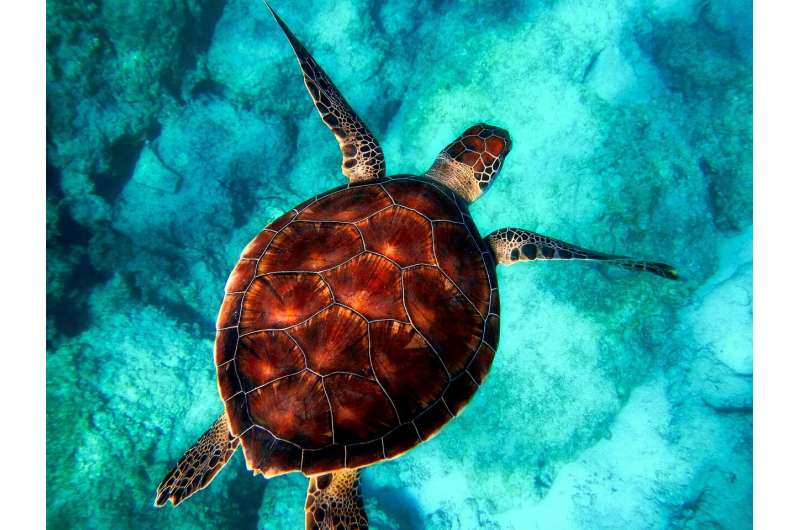Will the ocean benefit from the battle of the microbeads bans?

I close my eyes and instead of falling asleep I see this: "Talc, Mica, Magnesium Stearate, Polyethylene…" – one of the thousands of product ingredient lists I had meticulously combed through. This particular one came from a make-up product and stood out to me because it raised so many excellent questions about the scale of the microbead pollution problem (or microplastic ingredients as I prefer to call them after spending years on developing robust definitions).
For example, how do we assess whether the common plastic ingredients – polyethylene, nylon, polyethylene terephthalate (PET) – that I keep seeing listed on make-up and skincare products, such as face powders, eyeshadows and moisturisers, end up in the ocean as tiny plastic particles that threaten sea life? Evidence suggests many of these products are washed off down the drain when we shower or use the sink, just like the face scrubs and toothpastes in which microplastic ingredient use is now banned across the UK.
Within the Marine Plastics team at Fauna & Flora International (FFI), we have been discussing this question at length with a wide range companies, scientists and product formulators and summarised all of the evidence we gathered in detailed guidelines for policymakers and companies interested in fully addressing the problem of plastic pollution emanating from product ingredients. Back in 2016 these guidelines were formally recommended by the UK Parliament's Environmental Audit Committee, which called on the UK government to ban microbead use, as well as by the world-renowned plastic pollution expert Richard Thompson.
And it is not just UK policymakers who are paying attention. Over the past year, we have been invited by the European Chemicals Agency to provide it with technical expertise as it develops proposals for EU legislation relating to polluting plastic ingredients. These proposals have just been published, and it is really encouraging to see that some of our guidelines have clearly been taken into consideration.
What I am particularly pleased to see in these proposals is the recognition that tiny plastic pieces are hazardous when they reach the ocean regardless of what product they come from, and that any release to the environment is a risk that must be controlled. This includes so-called 'leave-on' cosmetics (i.e. those that are not intended to be immediately removed), which were not included in the scope of the UK ban. Did you know, for example, that your eyeshadow could be predominantly nylon, the same plastic as most fishing nets?
What made the UK ban world-leading when it came into force last year was the adoption of the robust microbeads definition that we recommended. However, the scope of the UK ban remained limited to so-called 'rinse-off' cosmetics (i.e. those designed to be on the skin only for a brief period) despite concerning evidence regarding other product types such as make-up, lotions and even laundry detergents or floor cleaners – evidence that was enough to make New Zealand ban plastic ingredient use in abrasive cleaning products, for example.
The new proposal for EU legislation on this issue goes much further in terms of product categories, which, if enacted, would give the EU a strong claim to have the best microbeads ban in the world. UK environment minister Thérèse Coffey was quick to respond by highlighting that "the EU is following our lead but it's very disappointing that any ban would only be introduced three years after the UK" – so will the UK now act to strengthen its own microbeads legislation, to keep its world-leading microbeads ban title? This is now a tight contest, and one from which our ocean stands to benefit. As the minister emphasised in her statement, "we need global action on microbeads now". And we would add that we also need comprehensive, evidence-based and collaborative action.
To facilitate such action, FFI would encourage the UK government to:
- Learn from the EU proposals by considering an extension of the scope of the UK microbeads ban to cover all types of products within the proposed EU-wide restriction, including household cleaning products and leave-on cosmetics
- Share lessons learned from challenges associated with enforcing the implementation of the UK microbeads ban to date in order to inform implementation of the EU-wide proposals
- Share the evidence behind the definitions in the UK microbeads ban to encourage the European Chemicals Agency to strengthen the EU proposal by removing problematic exemptions (see below)
We would also urge the European Chemicals Agency and the bodies taking forward their proposal for legislation to:
- Include more ambitious timelines for the phasing out of microplastic ingredients, especially from rinse-off cosmetic products that contain microplastics that have already been banned in the UK
- Remove the exemptions for plastic ingredients less than 1 nm in size and for any so-called marine biodegradable microplastics (neither of which are exempt from the UK ban)
- Use the evidence gathered on the microplastic ingredient use across a very wide range of products to encourage the UK and other countries to learn from it in the improvement or development of their own legislation
With the UK and the EU now in a race to see who can develop the best microbeads legislation to protect our oceans, I am hopeful that my sleepless nights may soon be a thing of the past.
Provided by Fauna & Flora International



















